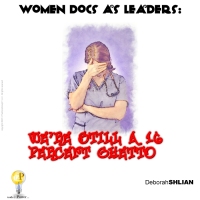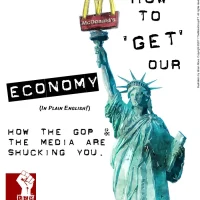New Ways to Vote – California Elections, MMP or Instant Run-Off May Hold the Key to Ending Gridlock Woes

We all know that our federal government is broken. Special interests rig the game on both sides of the aisle. A recent Gallup poll shows an astounding 81% of the country doesn’t believe Washington is working. We watch parties ignore the will of the people in the center to court money from the fringes. This madness has to stop. But how? Voting is the key to both the gridlock on governing power and disincentivizing special interest lobbying “buying” elected officials.
Our electoral system needs a major overhaul. To fix it, we first have to fix how we vote. Two alternative voting systems used by other democracies, and bellwether California’s new voting system may be showing us the way to a brighter horizon for American politics.
The Libertarian extreme Right that hijacked the ever-shrinking Republican Party has waged un-civil war in the GOP and polarized our political systems even more because their Teahadis answer only to a segment of the uppermost 1%. More moderate Republicans, a dying breed, fear primary reprisals from their well-heeled masters, which pushes them so hard to the Right in primaries that they have become dysfunctional in many general elections where they can’t run on their extremist primary rhetoric.
We know that rules have been rigged to seize up the government process, from how the average American votes to the filibuster on the United States Senate floor. We have Congressmen and Senators more actively engaged in not getting the people’s business done to short-term political gain rather than to the benefit of the Americans who sent them to Congress or their state houses.
A minority of Americans control a majority of the power by owning the limited pools of elected officials from the two parties. Joe Citizen, unless he cozies up to to Koch, or unites with a union, is left fairly powerless.
The majority of Americans are either “Independent” or gave up on voting because neither major political party reflects their views, or they feel hopeless about the process in general.
We need to change the process.
Of all the things spelled out by the U.S. Constitution, our electoral systems were minimally codified by the Founding Fathers.
The Electoral College was a bad idea. Explainer CGPGrey gives you a great understanding of why:
Our system of elections has evolved by trial-and-error into the “Winner Take All” or “First Past the Post” (FPTP), the two party system that is slowly strangling our elected leaders’ ability to govern.
Watch this short video to explain why FPTP, the way we vote now, is a particularly un-democratic system:
FPTP results in an ever-decaying two party system that marginalizes the mainstream majority of voters to favor the extremists on either end of the political spectrum.
Third parties, like Ralph Nader’s various attempts or Ross Perot’s create only serve to create a “spolier” effect that tips power to the other majority party.
The two party system is easily co-opted by wealthy special interests because they can game and/or own the limited candidates the election system and consequently keep the government “sewn up.”
Gerrymandering, the movement of political boundaries to suit one of the two parties, is always a problem because the system encourages the two parties to power grab. Rachel Maddow clearly demonstrates how FPTP and gerrymandering rigs elections:
“Democrats did great in Michigan, but still couldn’t get the legislature back. To give you an idea of why that is, of how well Republicans in michigan have tilted the field to benefit themselves. look at the congressional races there for the same election for 2012. more people in michigan voted for a democrat to be their member of congress than voted for a republican. democrats got almost 250,000 more votes for michigan in the last election than republicans did. but the result of that vote was that of the 14 seats up for grabs, nine of them went to republicans and five of them went to democrats. republicans have so gerrymandered the state that even though democrats got more votes, republicans got nearly double the democrats’ number of seats. tadah, same thing in the legislature. 300,000 more votes in the state than republicans did. but by the magic of republican gerrymandering, democrats earning 300,000 more votes earned them eight fewer seats in the legislature than the Republicans got. [1]
In the FPTP system, you can never get rid of gerrymandering because there is far too much incentive, even with appointed commissions or other “unbiased” groups trying to fix political boundaries fairly, to power grab.
So what are the other options? You have to break the federal mold and try something new.
The Alternative Vote/Instant Run-Off
The “Alternative” voting system, also known as Instant Run-Off, is used in Australia and elsewhere successfully. First, watch this excellent CGPGrey video:
We all end up holding our noses and voting for candidates that we don’t like because they have power and money behind them. What if we could vote for the people whom we want by ranking our top three or five choices? Instead of being a spoiler, smaller candidates can help a major party, while making them more accountable to the smaller candidates’ constituencies.
Let’s say you were a Gary Johnson fan in the last election, and that his “Green Grass Party” was also fielding state and federal congressional candidates. You also liked Michael Bloomberg who ran as an independent in our example well enough, and he promised not to support Obama, whom you despise. You weren’t crazy about Mitt Romney, but Romney is more in line with your thinking. So you vote in this order:
1. Gary Johnson
2. Michael Bloomberg
3. Mitt Romney
Neither Johnson nor Bloomberg have the votes to win. Romney came in ahead of them in the general first-place tally, but slightly behind Obama. In Alternative voting, Johnson swings his voters to the highest tallied conservative candidate, which is Romney. Mitt wins because he picks up the extra votes. He is now beholding, though, to Johnson’s party, which did better in House/Senate races, to retain their voters support in the mid-terms and when he stands for re-election.
Mixed Member Proportional Representation
Watch this video on Mixed Member:
The lopsided wins that happen, particularly in mid-term elections like 2010, when the effects of the economy and gerrymandering yielded oversized returns for Republicans, have also aided Democrats in the past because the a minority, through rigging the game, can hold a majority of power. Mixed Member Proportional (MMP) is a more democratic option.
The number of seats in a political body is doubled, and each citizen gets two votes, one for the candidate, and one for the party. If 49% voted for Democrats, 40% for Republicans, and 11% for the Green Grass Party, the popular election results would be balanced by picks that assign seats based on the second vote for party. The end result is a legislative body that represents much closer the will of the electorate than FPTP voting that we currently do.
It has the added benefit of helping parties keep a handle on candidates. The remaining “party pick” candidates are on a party slate that would be available to voters prior to voting. Let’s say that Michelle Bachmann, who’s the no. 1 slot on the party ticket, says something incredibly stupid on TV that deeply offends voters. The GOP could move her name down the list, or off. Knowing this, Bachmann becomes more circumspect in her public pronouncements for fear of losing position.
That gamesmanship can bee seen as a downside, but MMP eliminates minority rule and expands party choice. The system is not prone to gerrymandering because little is gained by doing it. It also fosters healthy smaller parties whose views can best reflect the citizens who support them.
The California System
California has deployed a simple system to make their elections more fair: Candidates run in the first round together regardless of party affiliation. The top two vote-getters in the primary then face each other in the general election.
This opens up elected office and ends the stranglehold of the Koch Brothers their 1%ers pals. Moderate Republicans don’t have to fear being shut out during a primary. It allows smaller parties, and unaffiliated candidates to run. It helps candidates running for the center that shows up in the general election because they dont’ have to take ideologically extreme positions to win their primaries that cost them a general election.
The California voting system also undercuts the buying of politicians by special interests, because no candidate really has a “lock” on office and, if word gets out that voters, who poll favorably on something like gun control don’t like the NRA donations to Candidate Y, they have the others in A-Z to elect and can leave that candidate in the dust of political history without another thought.
California’s system has the advantage of working in one of the most populous states in the nation, and, like their leads in environmental protection and consumer safety, may be the bellwether that other states will employ.
Whatever system is tried, anything that would release the grip of gridlock on the cogs of government would be a measurable improvement to the enormous dysfunction that paralyzes both federal and state government in America.
My shiny two.
About Brian Ross
5 comments on “New Ways to Vote – California Elections, MMP or Instant Run-Off May Hold the Key to Ending Gridlock Woes”
Leave a comment Cancel reply
Information
This entry was posted on April 11, 2013 by Brian Ross in 2010, 2013, Barack Obama, Club for Growth, Congress, Constitution, Corporatocracy, Dead Billionaires Club, Democrats, Elections, GOP, Legislation, Mid-Term 2010, Mitt Romney, Politics, Republicans, Special Interests, State Legislatures, States, The Congress, The House, The Law, The Senate, Voter Registration, Voting, Years and tagged Alternative Vote, American Voting, California Elections, California Voting System, Electoral College, Federal Elections, FPTP, Gerrymandering, Government, Instant Run-Off, Instant Runoff, Koch Brothers, Mixed Member Proportional Representation, MMP, Political Opinion, Politics, State Elections, State Government, Third Parties, United States Government, Voting, Winner Take All.Shortlink
https://wp.me/p1uurW-TuGet Forward Thinking
Copyright Notice











The author is correct that we need to change our voting system. He was on the right track before he dragged in CA’s Top Two as a model. Anyone who has studied the results of CA’s limited Top Two races for partisan office can instantly recognize that it produces strange unanticipated results, like a Republican representing a district whose registration leans decidedly Democratic. Proportional Representation is the way to go for legislative bodies with simple Ranked Choice Voting for single winner offices. We can argue about which type of PR is best, but any PR is better than what we have, including Top Two.
This is why we offer more than the California model, which is imperfect, but at least is lurching towards a structural change that allows for MMP or another workable system. Refinement is certainly in order, but compared to the disaster of our broken “traditional” voting systems, I’m not sure that, warts and all, it’s not a move in the right direction.
A representative democracy has to ensure the right to representation. If your neighbors are overriding your choice for who represents you, you can end up without real representation. You can even end up with anti-representation. When you vote but don’t get the representation of your choice, we need to recognize that as a violation of your voting rights.
Any system of proportional representation would be an improvement over how we elect legislatures, city councils, and school boards. The use of better election methods can start locally.
The California top-two system is not a good system. It is still greatly exposed to vote splitting and the spoiler effect in the plurality primary and it is toxic to minor parties.
This is why we offer more than the California model, which is imperfect, but at least is lurching towards a structural change that allows for MMP or another workable system. Refinement is certainly in order, but compared to the disaster of our broken “traditional” voting systems, I’m not sure that, warts and all, it’s not a move in the right direction.
Pingback: A Tea-Bone to Pick with the Constitution’s Framers Over Elections | truth-2-Power